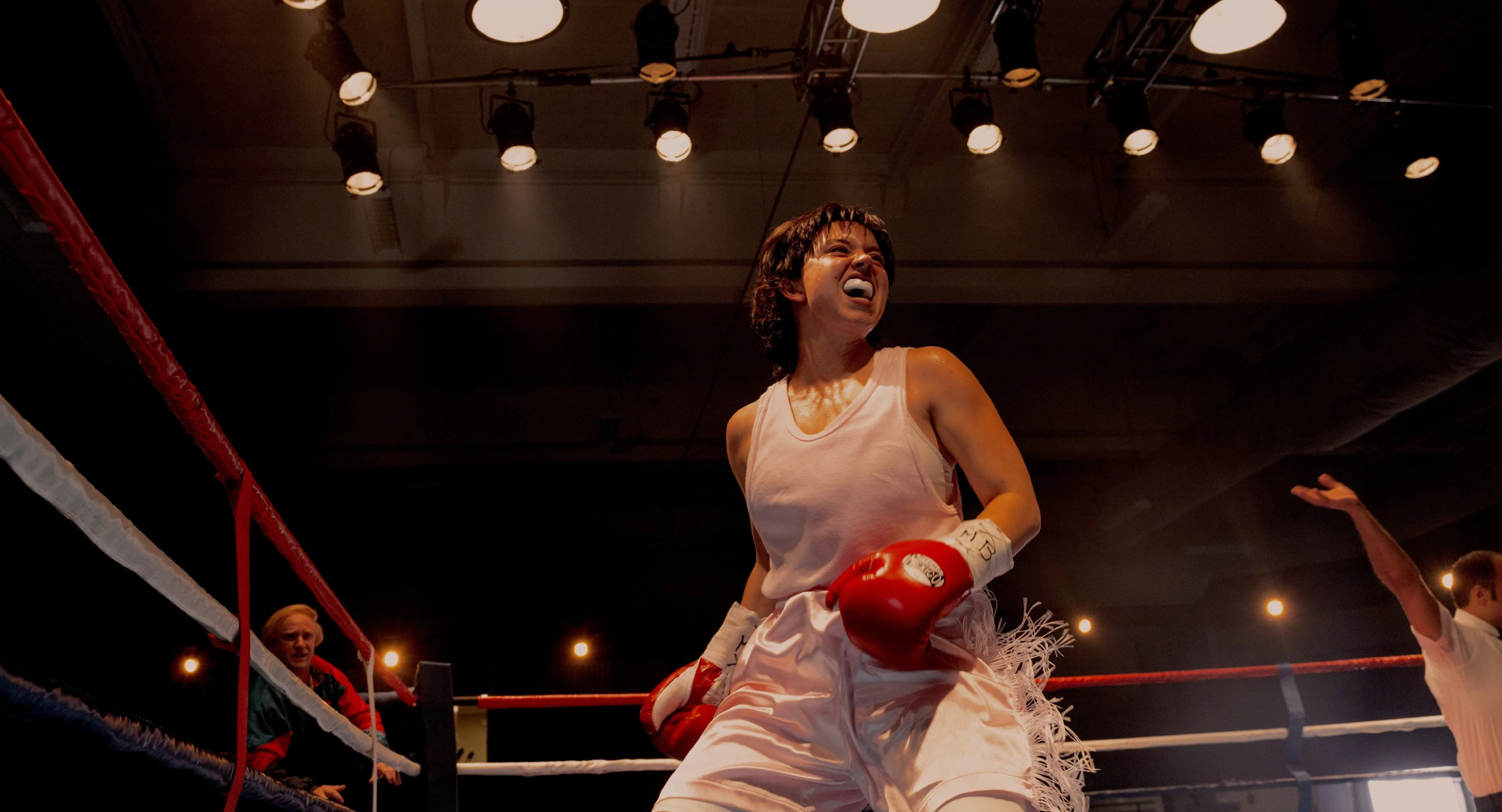Christy – Film Review
Published October 29, 2025

David Michôd’s Christy is the kind of biographical sports drama that pulls no punches—literally or figuratively. Chronicling the rise and near fall of Christy Martin, one of the most famous female boxers of the 1990s, the film explores the intersections of ambition, violence, and survival. Written by Michôd and Mirrah Foulkes, the film captures both the thrill of the fight and the nightmare of an abusive marriage that nearly took Martin’s life. With Sydney Sweeney in a transformative performance, Christy swings hard between triumph and tragedy. Though its execution occasionally stumbles under the weight of its own tonal shifts, the film lands enough emotional blows to make it a compelling—if flawed—portrait of resilience.
The film opens in the coal town of Mullens, West Virginia, where a young Christy Martin (Sweeney) discovers a sense of power in a sport dominated by men. Her raw energy and unpolished style quickly attract attention, especially from James V. Martin (Ben Foster), a veteran trainer whose charm masks deep insecurities and control issues. What begins as a mentor-protégé dynamic soon morphs into a volatile marriage, one that propels Christy into the spotlight while gradually consuming her from the inside.
Michôd’s direction thrives in these early scenes, balancing the underdog euphoria of Christy’s rise with the claustrophobic tension of her domestic life. The boxing matches, shot with kinetic, almost documentary-like intensity, contrast sharply with the suffocating interiors of Christy’s home. The sound design amplifies the contrast—the cheers of the crowd fade into the muffled thuds of fists hitting flesh behind closed doors. It’s an unnerving but effective metaphor for the duality of Christy’s existence: the celebrated fighter who cannot escape her own personal ring.
The screenplay by Michôd and Foulkes paints Martin as a complicated figure—defiant, impulsive, and prone to self-destruction. Her relationship with her conservative parents (Merritt Wever and Ethan Embry) adds another dimension, particularly in how her mother’s religious rigidity and disapproval of Christy’s sexuality echo the suffocation she experiences in her marriage. This throughline of identity suppression and shame provides the film with a thematic spine that elevates it beyond standard sports biopic territory.
Sydney Sweeney delivers a fierce and emotionally raw performance as Christy Martin, shedding the glamorous personas she’s best known for in favor of something bruised and unvarnished. Her physical transformation is remarkable—she trained extensively to capture the boxer’s stamina and stance, and it shows in every movement. But it’s her emotional vulnerability that truly stands out. Her portrayal feels less like imitation and more like embodiment; she understands that Christy’s real battles are psychological, not athletic.
Ben Foster, playing James V. Martin, matches her intensity with a chilling portrayal of manipulation and control. He imbues Jim with moments of pathetic tenderness that make his outbursts all the more terrifying. Foster’s performance avoids caricature, opting instead for a slow descent into monstrousness.
Merritt Wever brings quiet heartbreak to the role of Christy’s mother, Joyce, whose refusal to accept her daughter’s sexuality adds emotional complexity to the family dynamic. Katy O’Brian, as fellow boxer Lisa Holewyne, offers brief but potent moments of camaraderie and mutual recognition—two women who understand what it means to be underestimated in a man’s world.
David Michôd, known for films like Animal Kingdom and The King, brings his signature blend of grit and operatic tension to Christy. The boxing scenes are filmed with a visceral realism that avoids glamorization. Instead of glorifying the violence, Michôd makes the audience feel every hit, every gasp for air. The choreography is tight, the camera movements purposeful—close enough to show the sweat, but never so stylized that it feels disconnected from reality.
Yet, the film’s pacing and structure sometimes falter. The first half, detailing Christy’s rise in the 1990s boxing scene, feels vibrant and propulsive. However, the second half—focused on her marriage’s disintegration—slows to a crawl. While the subject matter is harrowing and vital, Michôd occasionally lingers too long on moments of misery, blunting their impact. The tonal shift from sports biopic to survival thriller, while thematically justified, feels abrupt, leaving some narrative threads underdeveloped.
Still, the film’s final act is handled with striking restraint. Michôd resists the temptation of melodrama, choosing instead quiet endurance over cathartic triumph.
Germain McMicking‘s cinematography gives Christy a textured visual identity. The film’s palette evolves with Christy’s journey: the muted blues and greys of her early life give way to neon-lit boxing arenas and later, sterile hospital rooms. Each setting reflects her shifting sense of isolation and exposure. The use of natural light during training sequences emphasizes Christy’s grounded work ethic, while darker compositions underline the emotional decay of her marriage.
Where Christy excels is in its performances and raw emotional authenticity. Sweeney and Foster’s dynamic is electric, uncomfortable, and deeply human. Michôd’s refusal to sanitize Christy Martin’s story is commendable—this is not a polished rise-to-glory tale, but a chronicle of survival through violence and self-discovery.
However, the film occasionally struggles with balance. The heavy focus on Christy’s abusive relationship overshadows her sporting achievements, leaving the boxing world itself underexplored. Secondary characters, especially Lisa Holewyne, could have been given more depth to contextualize Christy’s impact on women’s boxing as a whole. Some viewers may also find the film emotionally draining, given its unflinching portrayal of trauma without offering many moments of reprieve.
Christy is a bruising, powerful, and uneven biopic elevated by Sydney Sweeney’s extraordinary performance and David Michôd’s visceral direction. It’s not an easy watch—nor should it be. The film succeeds in honoring Christy Martin’s resilience while confronting the ugliness that accompanied her fame. Though it occasionally loses sight of its balance between sport and survival, it remains an unforgettable character study of a woman who refused to stay down.
